McKinney, TX Pollen and Allergy Report for Summer 2023
Pollen Allergy Trends in McKinney, TX
When is pollen lowest in McKinney, TX?

February
Lowest month total PPM
Avg. PPM
When is pollen highest in McKinney, TX?

March
Highest month total PPM
Avg. PPM
How does pollen in McKinney, TX compare to Texas?
McKinney has a higher average PPM than the state of Texas.
McKinney yearly avg PPM:
Texas yearly avg PPM:
How does pollen in McKinney, TX compare to the USA?
McKinney has a higher average PPM than the USA.
McKinney yearly avg PPM:
USA yearly avg PPM:
Is pollen worse this year in McKinney, TX?
Spring 2023 was worse than spring 2022.
Spring 2023 PPM:
Spring 2022 PPM:
Average PPM in McKinney, TX
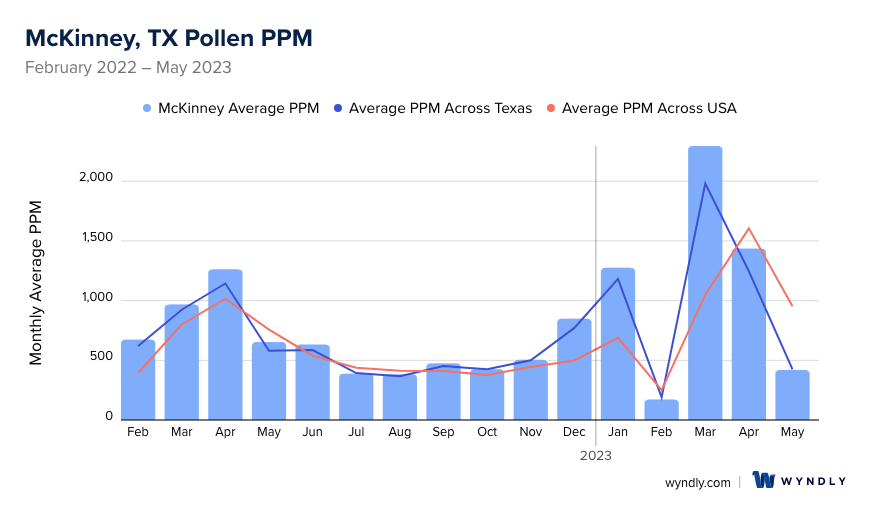
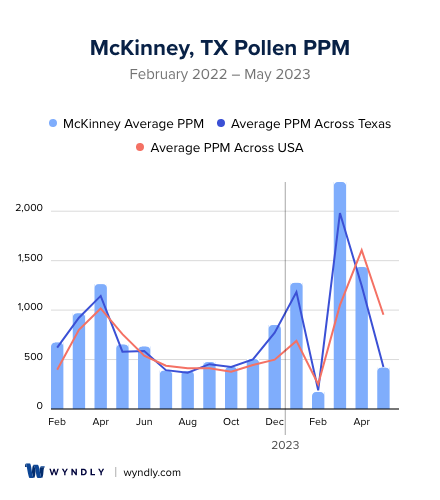
McKinney, TX Pollen and Allergy Breakdown by Month
Grass
When is grass pollen highest in McKinney, TX?
February has the highest grass pollen in McKinney, TX with an average PPM of
When is grass pollen lowest in McKinney, TX?
December has the lowest grass pollen in McKinney, TX with an average PPM of
Tree
When is tree pollen highest in McKinney, TX?
March has the highest tree pollen in McKinney, TX with an average PPM of
When is tree pollen lowest in McKinney, TX?
July has the lowest tree pollen in McKinney, TX with an average PPM of
Weed
When is weed pollen highest in McKinney, TX?
December has the highest weed pollen in McKinney, TX with an average PPM of
When is weed pollen lowest in McKinney, TX?
February has the lowest weed pollen in McKinney, TX with an average PPM of
McKinney, TX Pollen Monthly Breakdown by Pollen Type
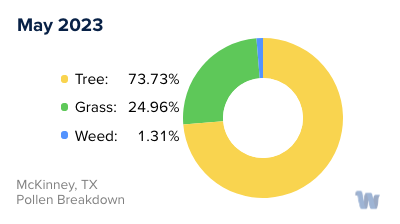
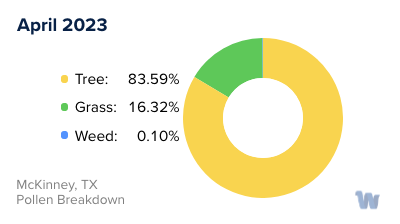
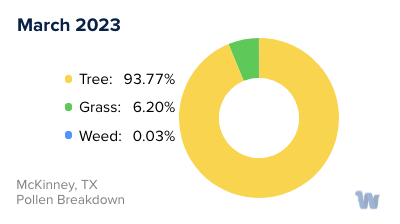
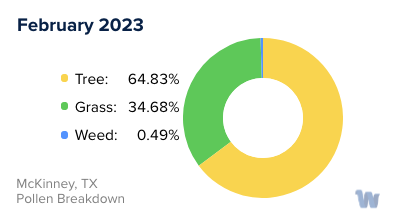
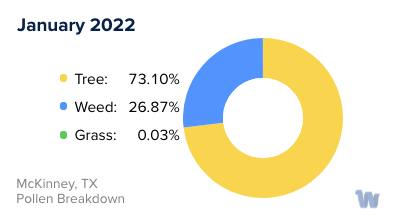



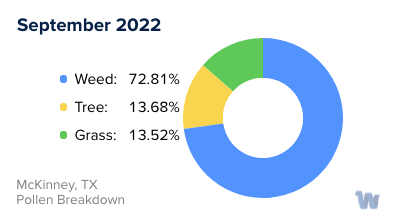
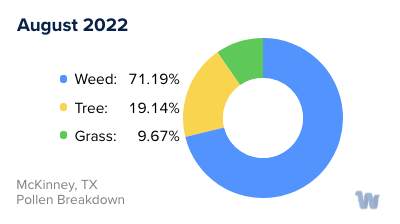
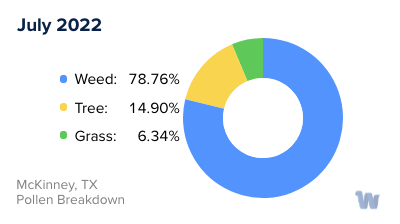
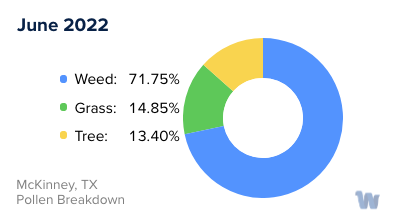

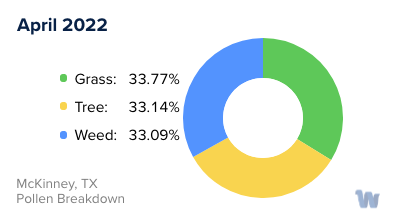
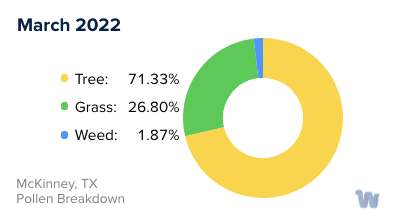

Pollen and Hay Fever in McKinney, TX
Pollen allergies, often associated with the term 'hay fever,' are a common and sometimes frustrating aspect of life for many residents of McKinney, Texas. Unlike many other regions where the allergy season is mainly limited to spring, the pollen season in Texas stretches across the year due to the state's mild winters that allow for constant plant growth and pollination.
One of the primary culprits of pollen allergies in McKinney from November to February is the Mountain Cedar. This tree's pollen can travel hundreds of miles, making it difficult to avoid. The main symptoms associated with Mountain Cedar pollen include itchy, watery eyes, and a runny or stuffy nose, often accompanied by sneezing.
As the Mountain Cedar season wraps up, the period from January to May introduces new allergens, including those from Elm, Ash, and Mulberry trees. The pollen from these trees can lead to sneezing, wheezing, and asthma-like symptoms.
Springtime in Texas, particularly from March to May, adds Oak and Pecan tree pollen to the mix. This season also sees the release of pollen from various grasses, such as Bermuda, Johnson, and Kentucky bluegrass. Symptoms during this period can include a sore throat and asthma-like symptoms, in addition to the typical runny nose and watery eyes.
Interestingly, the blazing heat of the summer months (June and July) offers a brief respite from pollen allergies as most common sources of allergies stop producing pollen, leading to a drop in pollen counts.
However, the relief is short-lived as Ragweed, a soft-stemmed, flowering weed common in the tropical and subtropical regions of the Americas, starts to bloom in August and continues until November. This period can bring symptoms like runny noses, sneezing, itchy eyes, and in severe cases, asthma flares.
With the end of the ragweed season in November, the cycle begins anew with the bloom of Mountain Cedar, marking the start of another year-round allergy season in McKinney, Texas. This relentless cycle of pollen allergies is a testament to Texas's diverse flora and unique climatic conditions. Despite the challenges, the residents of McKinney have adapted to these conditions, navigating the varying pollen seasons with resilience and grace.


